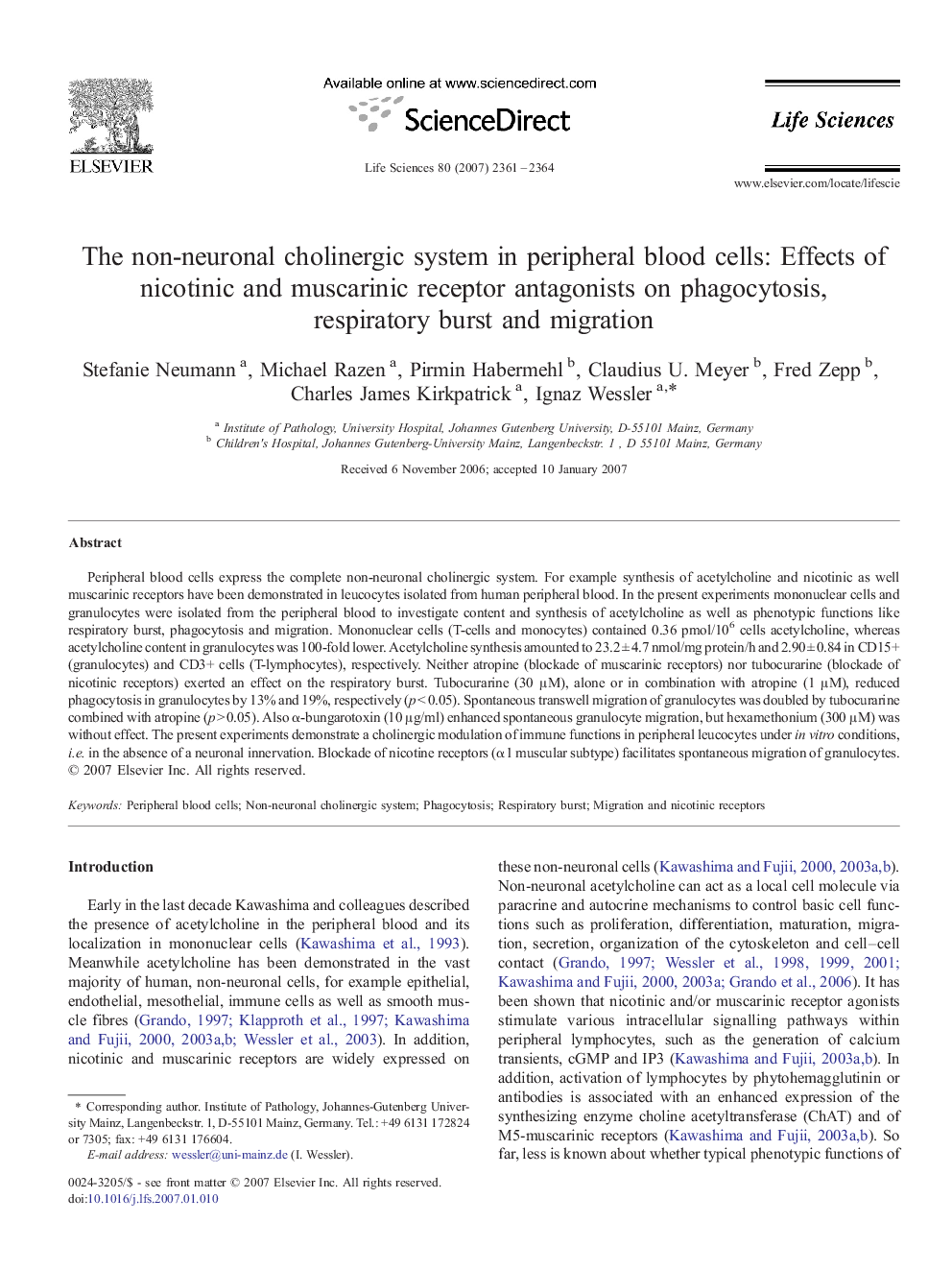| Article ID | Journal | Published Year | Pages | File Type |
|---|---|---|---|---|
| 2553583 | Life Sciences | 2007 | 4 Pages |
Peripheral blood cells express the complete non-neuronal cholinergic system. For example synthesis of acetylcholine and nicotinic as well muscarinic receptors have been demonstrated in leucocytes isolated from human peripheral blood. In the present experiments mononuclear cells and granulocytes were isolated from the peripheral blood to investigate content and synthesis of acetylcholine as well as phenotypic functions like respiratory burst, phagocytosis and migration. Mononuclear cells (T-cells and monocytes) contained 0.36 pmol/106 cells acetylcholine, whereas acetylcholine content in granulocytes was 100-fold lower. Acetylcholine synthesis amounted to 23.2 ± 4.7 nmol/mg protein/h and 2.90 ± 0.84 in CD15+ (granulocytes) and CD3+ cells (T-lymphocytes), respectively. Neither atropine (blockade of muscarinic receptors) nor tubocurarine (blockade of nicotinic receptors) exerted an effect on the respiratory burst. Tubocurarine (30 μM), alone or in combination with atropine (1 μM), reduced phagocytosis in granulocytes by 13% and 19%, respectively (p < 0.05). Spontaneous transwell migration of granulocytes was doubled by tubocurarine combined with atropine (p > 0.05). Also α-bungarotoxin (10 μg/ml) enhanced spontaneous granulocyte migration, but hexamethonium (300 μM) was without effect. The present experiments demonstrate a cholinergic modulation of immune functions in peripheral leucocytes under in vitro conditions, i.e. in the absence of a neuronal innervation. Blockade of nicotine receptors (α1 muscular subtype) facilitates spontaneous migration of granulocytes.
